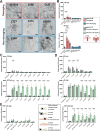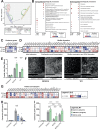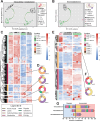Host albumin redirects Candida albicans metabolism to engage an alternative pathogenicity pathway
- PMID: 40646002
- PMCID: PMC12254302
- DOI: 10.1038/s41467-025-61701-5
Host albumin redirects Candida albicans metabolism to engage an alternative pathogenicity pathway
Abstract
Pathogenicity mechanisms of the yeast Candida albicans involve filamentous growth, adhesion, invasion, and toxin production. Interestingly, clinical isolates, and other Candida spp., can cause infection independent of filamentation or toxin production. These strains and species often are characterized as avirulent ex vivo, yet this does not correlate with their potential to cause infection. We hypothesized that specific host factors, which trigger pathogenicity in vivo, are absent in in vitro infection models and thereby clinical isolates can seem avirulent ex vivo. We investigated how albumin, the most abundant protein in humans, impacts infection and cytotoxic potential of C. albicans in vitro. The presence of albumin induces otherwise non-damaging and non-filamentous clinical isolates to cause host cell cytotoxicity. Moreover, avirulent deletion mutants deficient in filamentation, adhesion, or toxin production are restored in their cytotoxicity by albumin. This involves transcriptional and metabolic reprogramming of C. albicans, increasing biofilm formation and production of the oxylipin 13-hydroxyoctadecadienoic acid, driving host cell cytotoxicity. Collectively, our study uncoveres a pathogenicity mechanism by which C. albicans causes epithelial cytotoxicity independent of its conventional virulence mechanisms. This alternative pathogenicity strategy helps to explain the avirulence of clinical isolates ex vivo, when they are separated from the host environment.
© 2025. The Author(s).
Conflict of interest statement
Competing interests: The authors declare no competing interests.
Figures








Similar articles
-
Histone deacetylase Sir2 promotes the systemic Candida albicans infection by facilitating its immune escape via remodeling the cell wall and maintaining the metabolic activity.mBio. 2024 Jun 12;15(6):e0044524. doi: 10.1128/mbio.00445-24. Epub 2024 Apr 29. mBio. 2024. PMID: 38682948 Free PMC article.
-
A small heat shock protein Fmp28 influences virulence by regulating Als3 expression via the cAMP-PKA signaling pathway in Candida albicans.mBio. 2025 Aug 13;16(8):e0125325. doi: 10.1128/mbio.01253-25. Epub 2025 Jun 30. mBio. 2025. PMID: 40586563 Free PMC article.
-
Transcriptomic insights into Candida albicans adaptation to an anaerobic environment.Microbiol Spectr. 2025 Jul;13(7):e0302424. doi: 10.1128/spectrum.03024-24. Epub 2025 May 22. Microbiol Spectr. 2025. PMID: 40401963 Free PMC article.
-
Candida albicans: Insights into the Biology and Experimental Innovations of a Commonly Isolated Human Fungal Pathogen.ACS Infect Dis. 2025 Jul 11;11(7):1780-1815. doi: 10.1021/acsinfecdis.5c00079. Epub 2025 Jun 13. ACS Infect Dis. 2025. PMID: 40512087 Review.
-
Host targets of candidalysin.PLoS Pathog. 2025 Jun 23;21(6):e1013284. doi: 10.1371/journal.ppat.1013284. eCollection 2025 Jun. PLoS Pathog. 2025. PMID: 40549807 Free PMC article. Review.
References
-
- Peroumal, D. et al. Virulence and pathogenicity of a Candida albicans mutant with reduced filamentation. Cell Microbiol21, e13103 (2019). - PubMed
MeSH terms
Substances
Grants and funding
- project no. 434385622 / GR 5617/1-1/Deutsche Forschungsgemeinschaft (German Research Foundation)
- CRR/TRR124 FungiNet C1 210879364/Deutsche Forschungsgemeinschaft (German Research Foundation)
- CRR/TRR124 FungiNet C2 210879364/Deutsche Forschungsgemeinschaft (German Research Foundation)
- CRR/TRR124 FungiNet A7 210879364/Deutsche Forschungsgemeinschaft (German Research Foundation)
- Jena School of Microbial Communication PhD extension grant/Carl-Zeiss-Stiftung (Carl Zeiss Foundation)
- project number S006424N DeVEnIR/Fonds Wetenschappelijk Onderzoek (Research Foundation Flanders)
- Exploration Grant/Boehringer Ingelheim Stiftung (Boehringer Ingelheim Foundation)
- 847507 (HDM-FUN)/EC | Horizon 2020 Framework Programme (EU Framework Programme for Research and Innovation H2020)
- BMBF 03Z22JN11/Bundesministerium für Bildung und Forschung (Federal Ministry of Education and Research)
LinkOut - more resources
Full Text Sources
Medical
Miscellaneous

